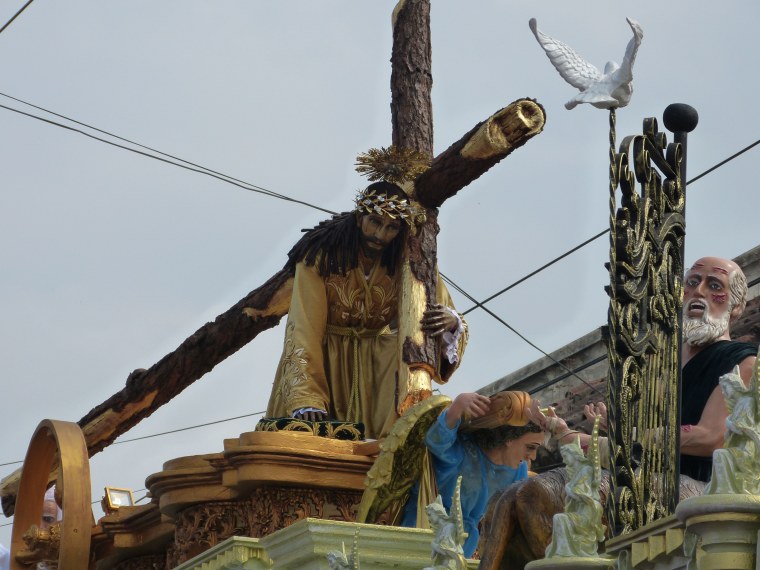ANTIGUA, Guatemala -- The cobblestoned streets of Guatemala’s colonial capital of Antigua seem trapped in time. The city dates back to the 15th century, as do many of its silent colonial ruins of convents and churches. In the shadow of three volcanoes, Antigua attracts thousands of visitors each year — it’s the most visited tourist attraction in Guatemala, second only to the Mayan ruins of Tikal.
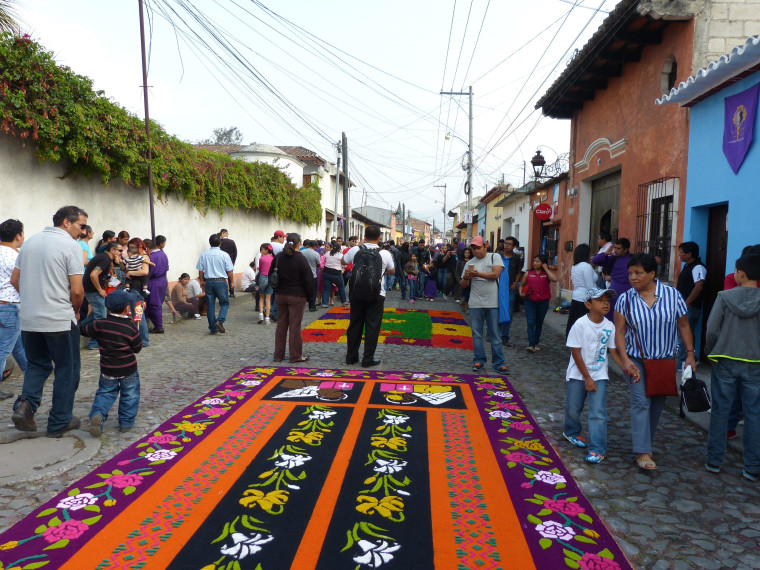
But at no time is Antigua more full of tourists than during the Lenten season, which harkens back to the 40 days Jesus Christ spent praying and fasting in the desert before his death and crucifixion. During this special season, bright banners of purple cloth, the color of mourning, decorate the city’s homes and businesses, as tourists flock to see the unique way Guatemala celebrates the Lenten season, especially during Semana Santa, or Holy Week that culminates on Easter Sunday.
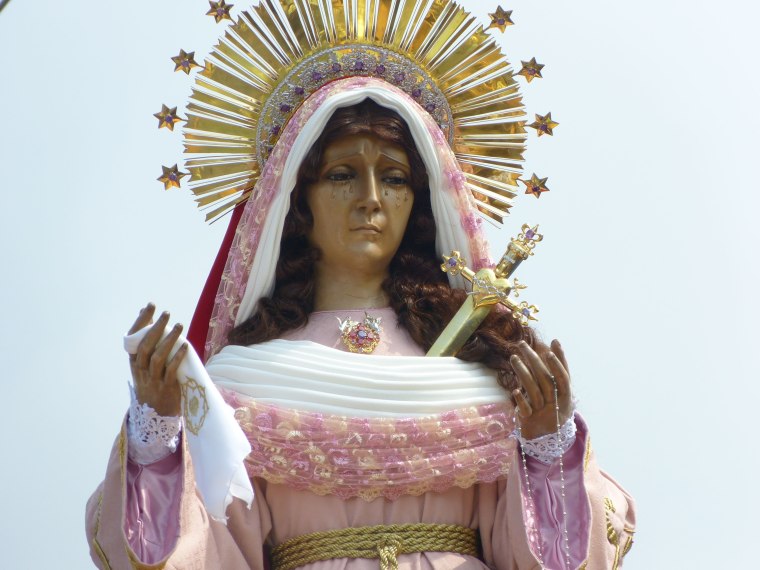
Every weekend during Lent, vibrantly colorful processions leave the city’s many churches. The faithful residents of this colonial city build alfombras — “carpets” — colorful creations of flowers, colored sawdust and vegetables on the cobblestone streets along the procession’s route. Some of these alfombras are the work of dozens of people, toiling many hours, sometimes all night, to create their ephemeral works of art before the procession comes by, leaving only crushed flowers and squashed sawdust in its wake.
In Antigua the traditional celebrations of the Lenten season begin on Ash Wednesday and continue with some 50 activities throughout this 40-day period. Guatemala’s Tourist Office expects over half a million people to visit Antigua during Lent of 2016 to witness the colorful traditional celebrations in the churches and streets of this colonial city. Tourists come from all over the world to witness the ancient celebrations first brought by the Spanish conquistadors when they arrived in Guatemala from Mexico in 1524, bringing the traditional Lenten celebrations from Seville, Spain.
“The way Lent is celebrated here is so special, so we make the sacrifice to come each year — we love the ceremony and the tradition and the devotion of the people.”
In addition to thousands of international visitors, people from throughout Guatemala also come to see the processions and velaciones in Antigua’s churches: vigils held prior to the processions in which the processional figures are placed on the altar with beautiful and colorful “carpets” made of flowers, vegetables, and sawdust, representing the Garden of Gethsemane where Jesus is said to have spent time before his arrest and crucifixion.
Even though Lenten processions are also held in their home town of Guatemala City, 77-year old Ana Maria Paiz and her 50-year-old daughter Carolina come to Antigua to see various Lenten observances each year: “We have a particular devotion to the procession of San Bartolo here in Antigua,” she said last Sunday. “The way Lent is celebrated here is so special, so we make the sacrifice to come each year — we love the ceremony and the tradition and the devotion of the people.”
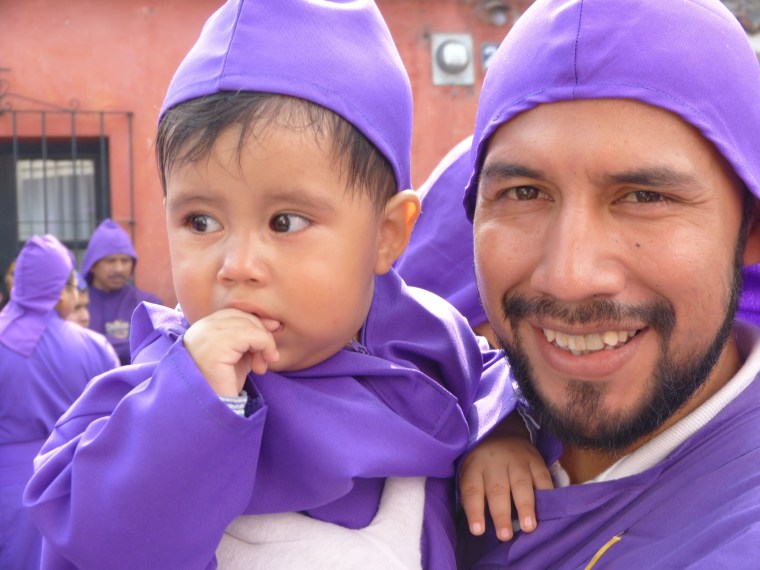
The processions themselves are almost moving theater: featuring Roman centurions — sometimes on horses — loud brass bands, and the hundreds of faithful and devout Antigua residents who carry the valuable antique colonial statues of Christ and the Virgin Mary from each church on immense wooden platforms; these andas each weigh several tons.
The faithful take turns carrying the andas on their shoulders … this is not an easy task, and so, they must switch places with another group every few blocks. The men carry the platform holding the statues of Christ, the women that of the Virgin Mary. Each of the statues is part of a tableau featuring other statues
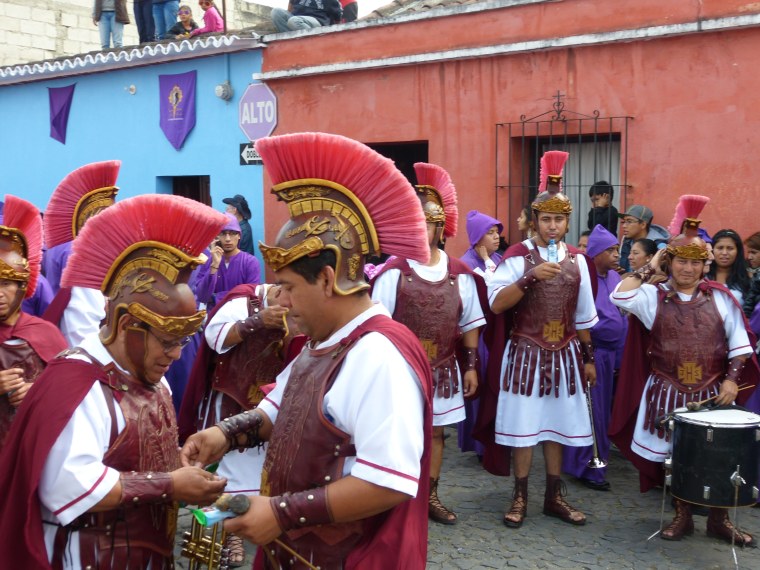
of saints and angels. In the spirit of Jesus’ sacrifice, the statues are paraded through the city for hours, leaving their home churches in the hours before dawn, and often not returning until long after dark.
Processions culminate in the intense celebrations of Holy Week. Then it seems the city is one large procession, featuring hundreds of the purple-shrouded carriers known as cucuruchos. It is considered a great honor to be a cucurucho, to carry the revered sacred statues through the streets as has been done for centuries.
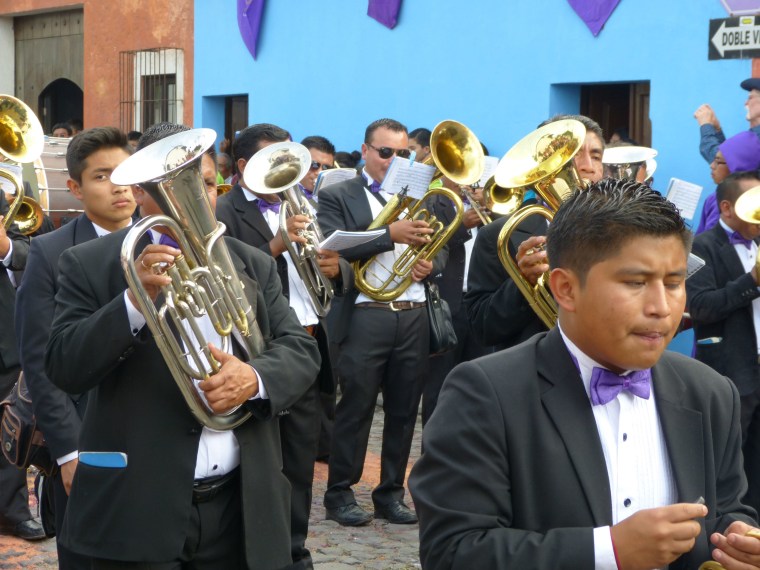
Fifteen-year old Herbert Conrado has signed up to be one of these carriers every year since he turned ten, when he became tall enough to carry the wooden platform. He speaks proudly of his participation in this religious observance: “I do it because it’s the right thing to do, to be part of this, offering penance the way that Jesus of Nazareth gave up his life for us.” This year, Conrado will make an offering of 30 quetzales (about 4 dollars) to “carry” in each of seven Lenten processions, three of them during Holy Week. “I advise people to rest a lot the day before a procession,” he says, “And a lot the day after, because your feet and back will be really sore.”
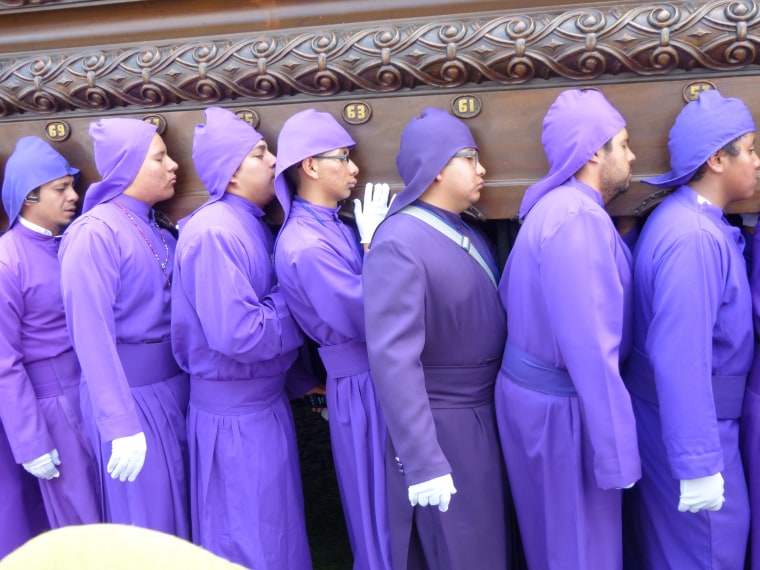
Even though Guatemala’s evangelical population has been growing over the last two decades, Antigua remains largely Catholic—a phenomenon many attribute to these massive communal Lenten celebrations. Even babies and young boy children are dressed in the traditional Lenten purple robes and hoods, on which are sewn patches with the words aspirante, meaning the young boy, or sometimes, infant, is an aspiring cucurucho.
“Es un honor ser un aspirante,” “It’s an honor to be an aspirante, said six-year old Damian Marquez at last Sunday’s procession. “When I grow up, I want to carry the anda like my father.” His father Luis Roberto and mother Maria beamed proudly, as they said the Lenten celebrations in Antigua represented more than an expression of faith: “They are also an expression of community. They bring the people closer together.”
